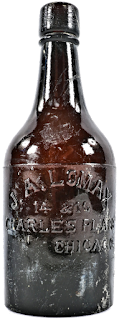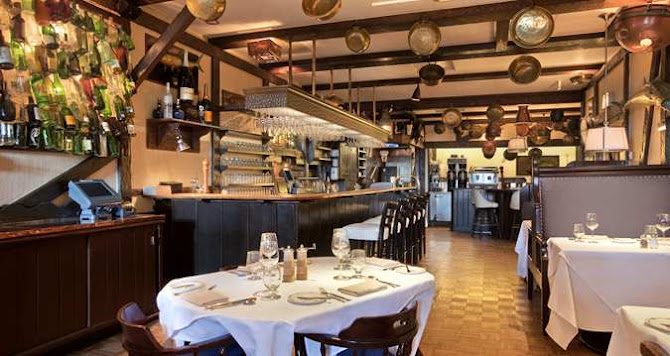In 1837, Chicago was incorporated as a city. The Charter gave the Mayor the power to regulate groceries (the time-period name for saloons), taverns and other liquor establishments. It was forbidden to sell liquor to servants, apprentices and Indians and no sales at all on Sundays. The stage was set for well over 100 years of municipal strife over where and when and who could drink what.

With most municipal services either privatized or organized at the neighborhood level, city elections in the 1840s and early 50s had been nonpartisan contests of little interest to anyone except real-estate owners. The extremely low voter turnout permitted this quietly mobilized coalition to win control of city hall with a thin base of popular support. In the early 1850s over 60% of the Chicago population was foreign-born.
The immigration flow of primarily Roman Catholic German and Irish immigrants raised the degree of xenophobia in the native population which manifested itself politically in the Know-Nothing Party, which briefly held substantial legislative power in Chicago as elsewhere in the country. At the same time, early Prohibitionists and temperance advocates who were interested in moral reform and public order were active in the Illinois legislature had passed a state prohibition ordinance, which was to be voted on in March 6, 1855.
 |
| A Chicago mid-1850s Saloon. [1] |
 |
| Klinkel's Hall, 1623 N. Wells, Chicago. 1854 - Klinkel's was involved in the Lager Beer Riots of 1855. [1] |
 |
| Mayor, Dr. Levi Boone (1855–1856) [1] |
Expecting resistance, Mayor Boone "reformed" the city's police force: tripling its size, refusing to hire immigrants, requiring police to wear uniforms [2] for the first time.
Mayor Boone then ordered enforcement of several widely ignored laws forbidding Sunday drinking and mandating that taverns be closed on Sundays.
Whiskey drinkers, usually American born, could buy their tipple on another day and drink in the privacy of their homes. Immigrants, Germans in particular, favored beer and didn't see the harm in Sunday drinking. At the time bottled beer was a specialty item. Almost all beer was served out of wooden kegs, necessitating rapid consumption on or near the premises.
The police forced the North Side bars to obey the ordinance, but allowed American bars on the South Side to stay open.
 |
| 1850s Chicago Bottle |
Prosecutions clogged the city courts and attorneys scheduled a test case for April 21. This, in effect, scheduled the riot. A huge crowd assembled to support the defendants. Mayor Boone ordered police to clear the courthouse area, which resulted in nine arrests.
An armed group from the North Side German community decided to rescue the nine prisoners, but Boone held them off by keeping the Clark Street swing bridge open until he was able to assemble more than two hundred policemen. This left many German people trapped on the bridge on their way to protest. The police then fired shots at the protesters stuck on the Clark Street Bridge over the Chicago River. When the bridge was closed, the North Siders surged across.
Shooting began. Police then fired shots at protesters stuck on the Clark Street Bridge over the Chicago River. A policeman named George W. Hunt was shot in the arm by a rioter named Peter Martin. Martin was killed by police, and Hunt's arm had to be amputated. Boone called in the militia, and the riot ended in minutes.
The riot resulted in 1 death and 60 arrests. Two were convicted, and none were ever actually imprisoned.
In March 1856, a heavy German and Irish turnout defeated the nativists, causing the $50 liquor license to be restored. More important was the renewed attention to city elections on the part of political party leaders, ending the era of municipal non-partisanship. Later that year, the prohibition law was voted down and open Sunday taps were the law in Chicago for another 65 years.
Compiled by Dr. Neil Gale, Ph.D.
[1] The era of Daguerreian and Early American Photography on Paper was between the 1860s and 1893.
[2] Chicago Police Officers were without uniforms in the beginning - their only distinguishing mark was a leather badge attached to their hat bands. 1855 the first uniform was adopted: a blue frock coat (nicknamed "copper"), blue navy cap with gold band, and a plain brass star. Officers carried heavy canes daily, batons by night and used metal "creakers" to call for help. Then there were the heavy coat jackets that stayed buttoned up to the top all year. A story has it that one hot summer day, a compassionate captain ordered his men to doff their coats. No one moved. He repeated the order. The men obeyed and were immediately sent home. Not one was wearing a regulation shirt. Most wore just an undershirt; some, no shirt at all.




























